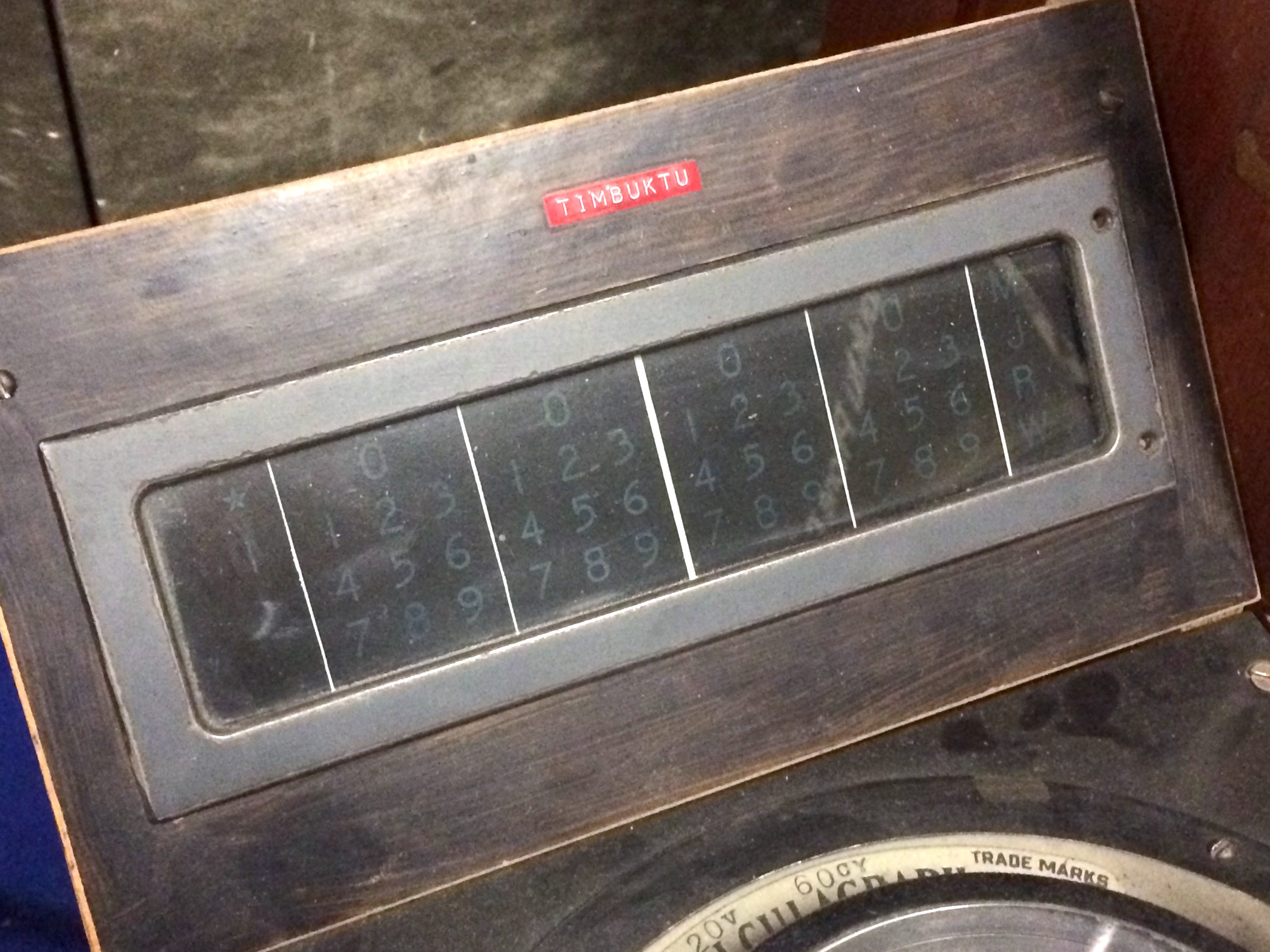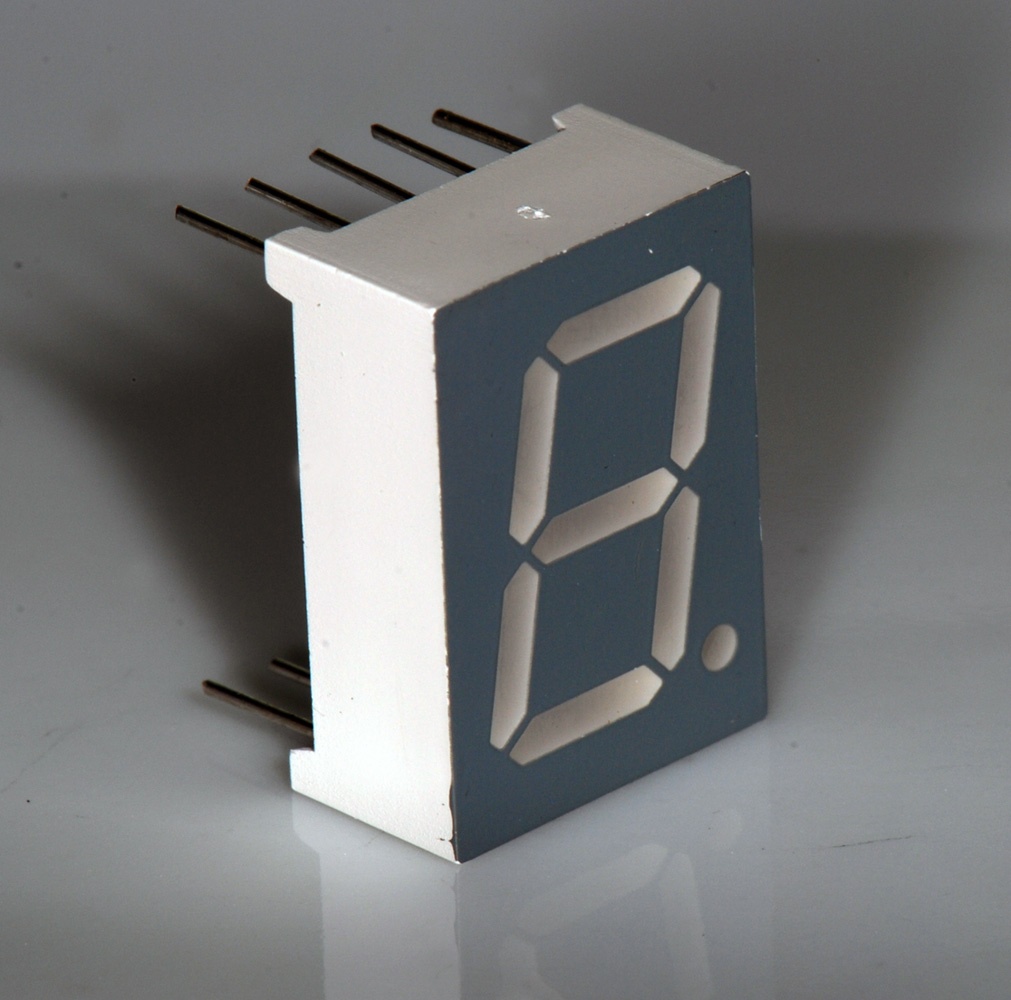|
Panel Call Indicator
Panel Call Indicator, or PCI, is a form of signalling used between two telephone offices. It was also originally called Relay Call Indicator (RCI). Originally designed along with the panel type telephone office, PCI was intended to allow subscribers in fully automated exchanges to dial numbers in manual offices the same way they dialed numbers in their own exchange. For PCI to achieve its purpose, the panel office sent the requested number to the manual office, where the number was lit on an operator's display. The switchboard operator at a PCI-aware manual office reads the number from the call indicator display and completes the call in the usual way. As a format of interoffice signaling, PCI is one of multiple options retained for compatibility in the #5 Crossbar switch, a later system which served as the platform for the initial DTMF push-button telephone services. In the British Director telephone system, Coded-Call Indicator working (CCI) filled a similar role, as it d ... [...More Info...] [...Related Items...] OR: [Wikipedia] [Google] [Baidu] |
Signalling (telecommunications)
In telecommunication, signaling is the use of signals for controlling communications. This may constitute an information exchange concerning the establishment and control of a telecommunication circuit and the management of the network. Classification Signaling systems may be classified based on several principal characteristics. In-band and out-of-band signaling In the public switched telephone network (PSTN), in-band signaling is the exchange of call control information within the same physical channel, or within the same frequency band, that the telephone call itself is using. An example is dual-tone multi-frequency signaling (DTMF), which is used on most telephone lines to customer premises. Out-of-band signaling is telecommunication signaling on a dedicated channel separate from that used for the telephone call. Out-of-band signaling has been used since Signaling System No. 6 (SS6) was introduced in the 1970s, and also in Signalling System No. 7 (SS7) in 1980 which b ... [...More Info...] [...Related Items...] OR: [Wikipedia] [Google] [Baidu] |
Party Line (telephony)
A party line (multiparty line, shared service line, party wire) is a local loop telephone circuit that is shared by multiple telephone service subscribers. Party line systems were widely used to provide telephone service, starting with the first commercial switchboards in 1878. A majority of Bell System subscribers in the mid-20th century in the United States and Canada were served by party lines, which had a discount over individual service. During wartime shortages, these were often the only available lines. British users similarly benefited from the party line discount. Farmers in rural Australia and South Africa used party lines, where a single line spanned miles from the nearest town to one property and on to the next. History Telephone companies offered party lines beginning in the late 1800s, although subscribers in all but the most rural areas may have had the option to upgrade to individual line service at an additional monthly charge. The service was common in s ... [...More Info...] [...Related Items...] OR: [Wikipedia] [Google] [Baidu] |
Synchronization
Synchronization is the coordination of events to operate a system in unison. For example, the conductor of an orchestra keeps the orchestra synchronized or ''in time''. Systems that operate with all parts in synchrony are said to be synchronous or ''in sync''—and those that are not are '' asynchronous''. Today, time synchronization can occur between systems around the world through satellite navigation signals and other time and frequency transfer techniques. Navigation and railways Time-keeping and synchronization of clocks is a critical problem in long-distance ocean navigation. Before radio navigation and satellite-based navigation, navigators required accurate time in conjunction with astronomical observations to determine how far east or west their vessel traveled. The invention of an accurate marine chronometer revolutionized marine navigation. By the end of the 19th century, important ports provided time signals in the form of a signal gun, flag, or dropping ... [...More Info...] [...Related Items...] OR: [Wikipedia] [Google] [Baidu] |
Electrical Resistance
The electrical resistance of an object is a measure of its opposition to the flow of electric current. Its reciprocal quantity is , measuring the ease with which an electric current passes. Electrical resistance shares some conceptual parallels with mechanical friction. The SI unit of electrical resistance is the ohm (), while electrical conductance is measured in siemens (S) (formerly called the 'mho' and then represented by ). The resistance of an object depends in large part on the material it is made of. Objects made of electrical insulators like rubber tend to have very high resistance and low conductance, while objects made of electrical conductors like metals tend to have very low resistance and high conductance. This relationship is quantified by resistivity or conductivity. The nature of a material is not the only factor in resistance and conductance, however; it also depends on the size and shape of an object because these properties are extensive rather than in ... [...More Info...] [...Related Items...] OR: [Wikipedia] [Google] [Baidu] |
Direct Current
Direct current (DC) is one-directional flow of electric charge. An electrochemical cell is a prime example of DC power. Direct current may flow through a conductor such as a wire, but can also flow through semiconductors, insulators, or even through a vacuum as in electron or ion beams. The electric current flows in a constant direction, distinguishing it from alternating current (AC). A term formerly used for this type of current was galvanic current. The abbreviations ''AC'' and ''DC'' are often used to mean simply ''alternating'' and ''direct'', as when they modify ''current'' or '' voltage''. Direct current may be converted from an alternating current supply by use of a rectifier, which contains electronic elements (usually) or electromechanical elements (historically) that allow current to flow only in one direction. Direct current may be converted into alternating current via an inverter. Direct current has many uses, from the charging of batteries to large power ... [...More Info...] [...Related Items...] OR: [Wikipedia] [Google] [Baidu] |
Binary-coded Decimal
In computing and electronic systems, binary-coded decimal (BCD) is a class of binary encodings of decimal numbers where each digit is represented by a fixed number of bits, usually four or eight. Sometimes, special bit patterns are used for a sign or other indications (e.g. error or overflow). In byte-oriented systems (i.e. most modern computers), the term ''unpacked'' BCD usually implies a full byte for each digit (often including a sign), whereas ''packed'' BCD typically encodes two digits within a single byte by taking advantage of the fact that four bits are enough to represent the range 0 to 9. The precise 4-bit encoding, however, may vary for technical reasons (e.g. Excess-3). The ten states representing a BCD digit are sometimes called '' tetrades'' (for the nibble typically needed to hold them is also known as a tetrade) while the unused, don't care-states are named , ''pseudo-decimals'' or ''pseudo-decimal digits''. BCD's main virtue, in comparison to binary ... [...More Info...] [...Related Items...] OR: [Wikipedia] [Google] [Baidu] |
Biquinary Code
Bi-quinary coded decimal is a numeral encoding scheme used in many abacuses and in some early computers, including the Colossus. The term ''bi-quinary'' indicates that the code comprises both a two-state (''bi'') and a five-state (''quin''ary) component. The encoding resembles that used by many abacuses, with four beads indicating either 0 through 4 or 5 through 9 and another bead indicating which of those ranges. Several human languages, most notably Fula and Wolof also use biquinary systems. For example, the Fula word for 6, ''jowi e go'o'', literally means ''five lusone''. Roman numerals use a symbolic, rather than positional, bi-quinary base, even though Latin is completely decimal. Examples Several different representations of bi-quinary coded decimal have been used by different machines. The two-state component is encoded as one or two bits, and the five-state component is encoded using three to five bits. Some examples are: * Roman and Chinese abacuses * Stibitz re ... [...More Info...] [...Related Items...] OR: [Wikipedia] [Google] [Baidu] |
Endianness
In computing, endianness, also known as byte sex, is the order or sequence of bytes of a word of digital data in computer memory. Endianness is primarily expressed as big-endian (BE) or little-endian (LE). A big-endian system stores the most significant byte of a word at the smallest memory address and the least significant byte at the largest. A little-endian system, in contrast, stores the least-significant byte at the smallest address. Bi-endianness is a feature supported by numerous computer architectures that feature switchable endianness in data fetches and stores or for instruction fetches. Other orderings are generically called middle-endian or mixed-endian. Endianness may also be used to describe the order in which the bits are transmitted over a communication channel, e.g., big-endian in a communications channel transmits the most significant bits first. Bit-endianness is seldom used in other contexts. Etymology Danny Cohen introduced the terms ''big-en ... [...More Info...] [...Related Items...] OR: [Wikipedia] [Google] [Baidu] |
Seven Segment Display
A seven-segment display is a form of electronic display device for displaying decimal numerals that is an alternative to the more complex dot matrix displays. Seven-segment displays are widely used in digital clocks, electronic meters, basic calculators, and other electronic devices that display numerical information. History Seven-segment representation of figures can be found in patents as early as 1903 (in ), when Carl Kinsley invented a method of telegraphically transmitting letters and numbers and having them printed on tape in a segmented format. In 1908, F. W. Wood invented an 8-segment display, which displayed the number 4 using a diagonal bar (). In 1910, a seven-segment display illuminated by incandescent bulbs was used on a power-plant boiler room signal panel. They were also used to show the dialed telephone number to operators during the transition from manual to automatic telephone dialing. They did not achieve widespread use until the advent of LEDs in the 1970s ... [...More Info...] [...Related Items...] OR: [Wikipedia] [Google] [Baidu] |
Tandem Office
A class-4, or tandem, telephone switch is a U.S. telephone company central office telephone exchange used to interconnect local exchange carrier offices for long distance communications in the public switched telephone network. A class-4 switch does not connect directly to telephones; instead, it connects to other class-4 switches and to class-5 telephone switches. The telephones of service subscribers are wired to class-5 switches. When a call is placed to a telephone that is not on the same class-5 switch as the originating subscriber, the call may be routed through one or more class-4 switches to reach its destination. Etymology ''Tandem'' derives from the Latin adverb ''tandem'' meaning ''at length'', and is used in English to mean a group of two people or machines working together, usually in series. A tandem switch is used to interconnect other switches via trunks. Thus, tandem switches are always part of a series of switches and lines that connect telephone callers t ... [...More Info...] [...Related Items...] OR: [Wikipedia] [Google] [Baidu] |
Sender
A sender was a special type of circuit in 20th-century electromechanical telephone exchanges which registered the telephone numbers dialed by the subscriber, and then transmitted that information to another exchange. In some American exchange designs, for example, the No. 1 Crossbar switch there were both originating senders and terminating senders. The corresponding device in the British director telephone system was called a "director" and, in other contexts, "register". History The sender concept was developed to meet the needs of large city telephone switching systems, where the total number of subscriber lines and multiple central offices throughout the city required complex switching arrangements that were not easily handled by the direct control systems then in use, such as the step by step, or Strowger system. These limitations included inefficient trunking in large service areas, and a limited ability for growth and reorganization as additional subscribers were added. ... [...More Info...] [...Related Items...] OR: [Wikipedia] [Google] [Baidu] |

_(14569629440).jpg)


